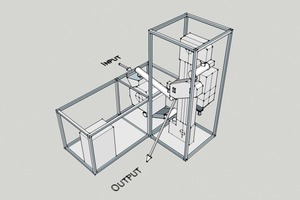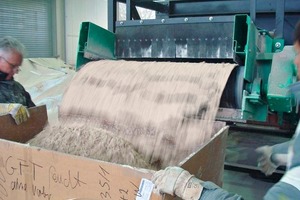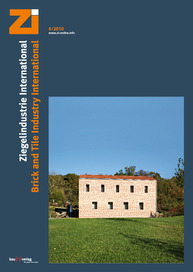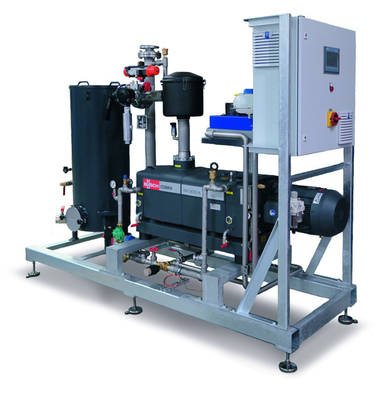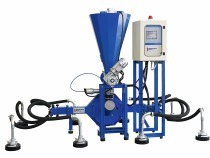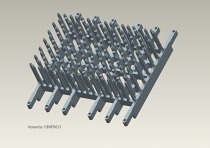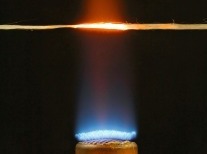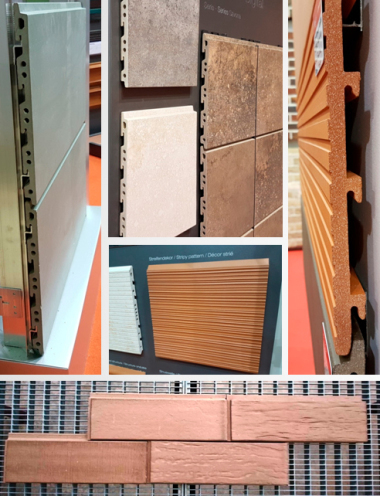Gerlach Engineering has come up with a modular recycling system for brick and ceramic scrap and wasters. The system includes all pieces of plant needed for comminuting ceramic scrap down to fine particle sizes. All components for small to medium quantities up to 2000 t/a are delivered by truck container, unloaded by mobile crane and quickly assembled thanks to push-fit fittings.
Hammer mill as core component
Special hammer mills serve as the plant’s core component. These massive impact crushers feature adjustable grinding and screening tracks to achieve the desired grain-size distributions. The machines are lined with thick armour plates that swing out for maintenance work to help maximize the unit‘s service life while minimizing its downtime. A unit designed for 8 to 10 t/h weighs 10 t and has a drive rating of 110 kW. The maximum feed size is 600 mm x 400 mm x 250 mm, with corresponding piece weights up to 200 kg. Roof tiles, planar elements, clinkers and wall/floor tiles can be comminuted. The outfeed has a sandy consistency, with first-run particle sizes ranging from:
› �0 ... 2.0 mm: 37%
› �2.0 ... 5.0 mm: 25%
› �5.0 ... 10.0 mm: 13%
› �larger 10.0 mm: 25%
A central filter draws the dust out of this innovative system. The particulate matter is subsequently either filled into big bags or forwarded directly to the clay preparation line. System operation is automatically monitored by the constituent control station, although the components can also be controlled individually by hand.
Chamotte in circulation
A wheel loader is normally used for filling the waste material into the supply hopper, from where it is dosed out and forwarded to the hammer mill on a conveyor. The outfeed from the mill circulates via a bucket elevator and screening plant, with the through fraction (= desired fraction) passing directly to the production line, while the oversize returns to the mill and is recomminuted together with fresh waste material. As mobile, semi-mobile or stationary modular systems, these recycling plants require little space, are therefore retrofittable, and they mesh easily into routine processes. In the event that a large company would like to have a containerized grinding system moved from one facility to another, Gerlach Engineering will gladly do the job.
Large pieces of ceramic material, natural stone slabs, chimneys and stoneware pipes can be downsized for the hammer mill with a Gerlach primary crusher. Naturally, Gerlach Engineering also builds stationary systems with production interfaces.

